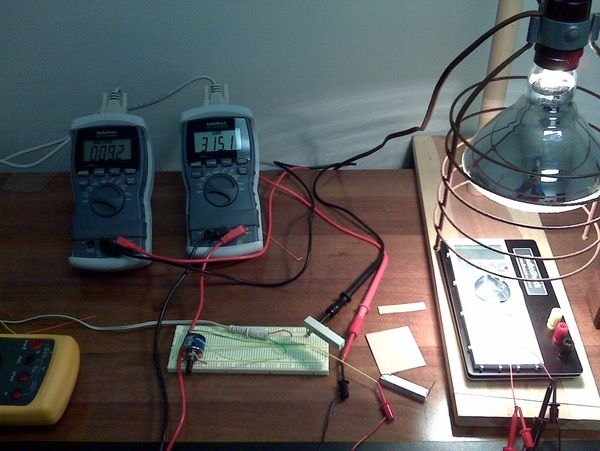| << Chapter < Page | Chapter >> Page > |
One of the problems associated with testing a new unproven photovoltaic material or cell design is that significant processing required in order to create a fully functioning solar cell. If it is desired to screen a wide range of materials or synthetic conditions it can be time consuming (and costly of research funds) to prepare fully functioning devices. In addition, the success of each individual cell may be more dependent on fabrication steps not associated with the variations under study. For example, lithography and metallization could cause more variability than the parameters of the materials synthesis. Thus, the result could be to give no useful information as to the viability of each material under study, or even worse a false indication of research direction.
So-called quick and dirty qualitative measurements can be employed to assess not only the relative photoresponse of new absorber layer materials, but also the relative power output of photovoltaic devices. The measurement procedure can provide a simple, inexpensive and rapid evaluation of cell materials and structures that can help guide the development of new materials for solar cell applications.
Everything needed for the measurements can be purchased at a local electronics store and a hardware or big box store. Needed items are:
A qualitative measurement of a solar cell’s current-voltage (I-V) characteristics can be obtained using the simple circuit diagram illustrated in [link] . [link] shows an I-V test setup using a household flood lamp for the light source. A small fan sits to the right just out of the picture.


Driving the potentiometer to its maximum value will place the cell close to open circuit operation, depending on the potentiometer range, so that the open circuit voltage can be simply extrapolated from the I versus V curve. If desired, the circuit can simply be opened to make the actual measurement once the rest of the data have been recorded. Data in this case were simply recorded by hand and later entered into a spreadsheet so an I-V plot could be generated. A sample plot is shown in [link] . Keep in mind that cell efficiency cannot be determined with this technique unless the light source has been calibrated and color corrected to match terrestrial sunlight. The fact that the experimental device actually generated net power was the result sought. The shape of the curve and the very low voltage are the result of very large resistive losses in the device along with a very “leaky” junction.

Notification Switch
Would you like to follow the 'Physical methods in chemistry and nano science' conversation and receive update notifications?